Every trip needs a soundtrack – a few songs that evoke the spirit of the place: driving Route 66 with radio blaring Born to be Wild, New York wouldn’t be New York without New York, New York, Chicago has Chicago. The question is how do you choose which song will accompany you through Emilia Romagna – there are just too many and all by the same composer. Don’t worry, usually the choice is made for you, since the songs of her hometown son, Giuseppe Verdi, pour out of every window as you drive by.
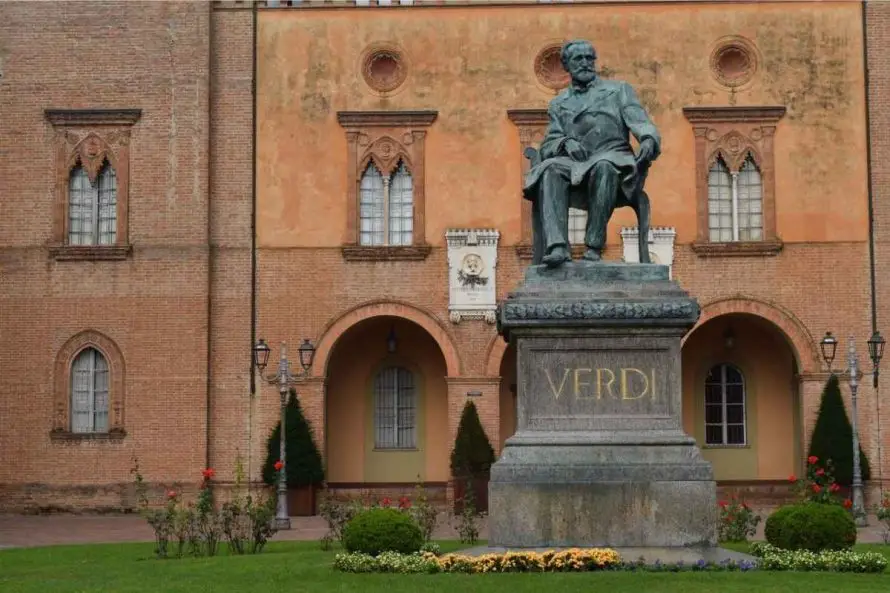
This trip wasn’t just any romp through Emilia Romagna, but one with Verdi taking a seat in the back. I was there to trace his every step, from birth to boom, before attending the premier of the annual Verdi Festival on October 1.
For those who might not recognize his name, Verdi was to opera what the Beatles were to rock. Born in 1813, Verdi composed some of the most enduring operas of all time. His was the resounding voice of Italy, as she turned from disjointed city-states to the united boot we know it as today.
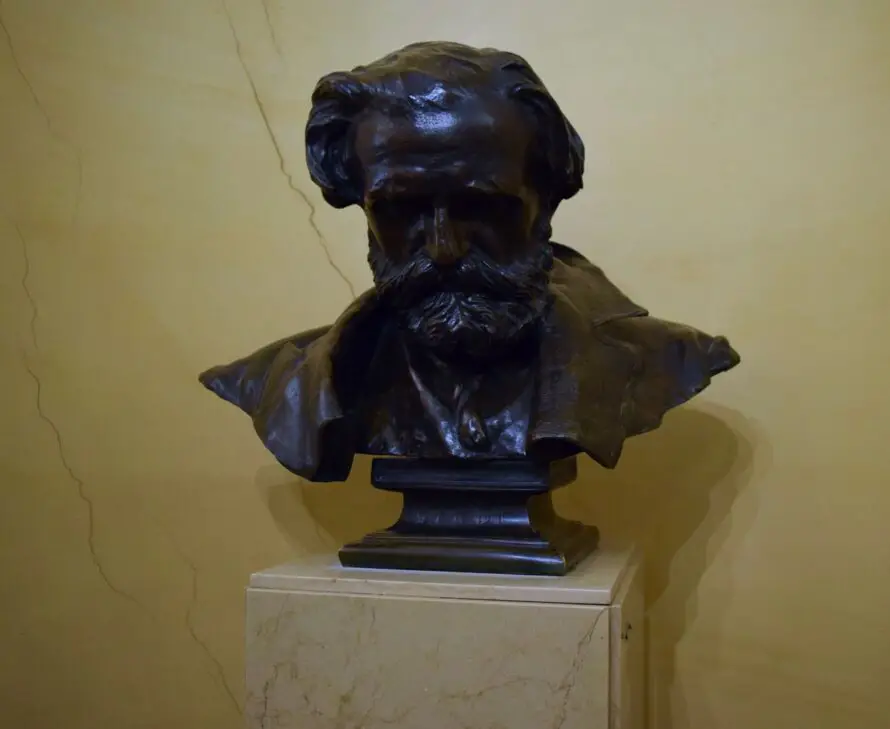
This donna was mobile way too early for her liking as she boarded a Ryan Air jet plane to Bologna. Yes, my luxury sensibilities were assaulted, but, at least, there are Fast Track and a splendid little lounge with a great boiled egg and toast at Stansted. My Bose in-ear noise cancelling headphones – one of the best purchases I ever made – had me sleeping through the entire flight.
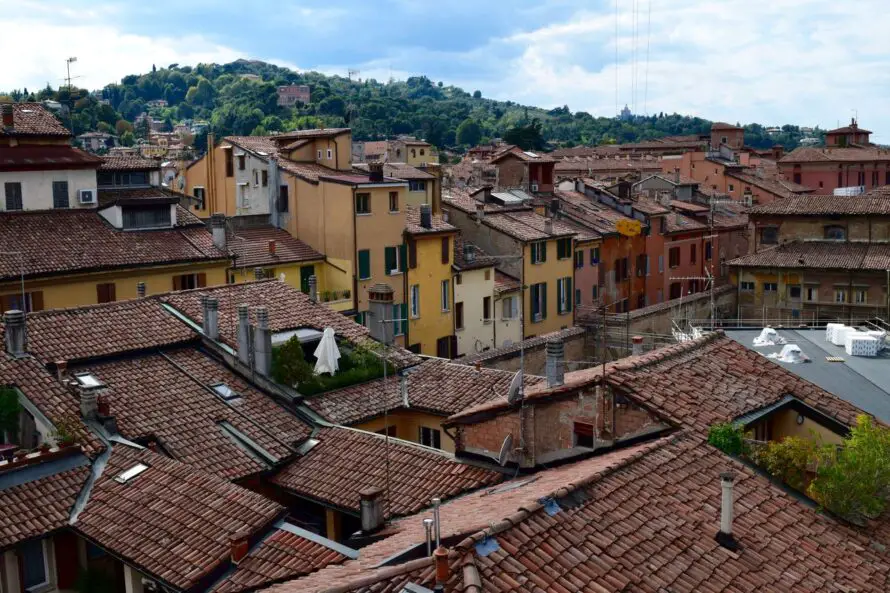
Bologna
Although the “red city”, due to its plethora of terracotta roofs, considers itself the jazz center of Italy, Bologna also championed the operas of its neighbor’s 18th Century melodies. Only an hour from the Verdi epicenter of Parma, many of his operas were enjoyed throughout the years at Teatro Communale da Bologna, one of the only remaining original theaters of its kind. As I toured through its hallowed halls – lucky enough was I to catch a few notes of a rehearsal of Sinfonia n. 1 in Re maggiore “Il Titano” of Gustav Mahler, with director Michele Mariotti at the helm.
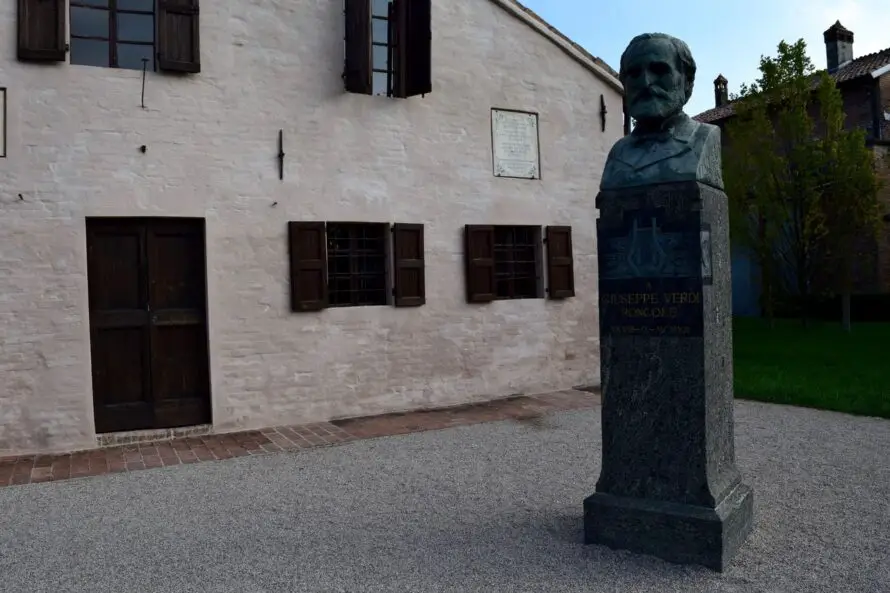
Busseto
The divine little town of Busseto, former capitol of a state once governed by the aristocratic Pallavicini family, is forever tied to Verdi. Her most famous inhabitant was born on the outskirts, in a countryside crossroad called Roncole Verdi. His birthplace, now a museum, is the hottest ticket in town.

Although, it is always fun to see where any musical hero is born, make sure to sneak into the nearby church and remember that teenage Verdi practiced his organ playing here.
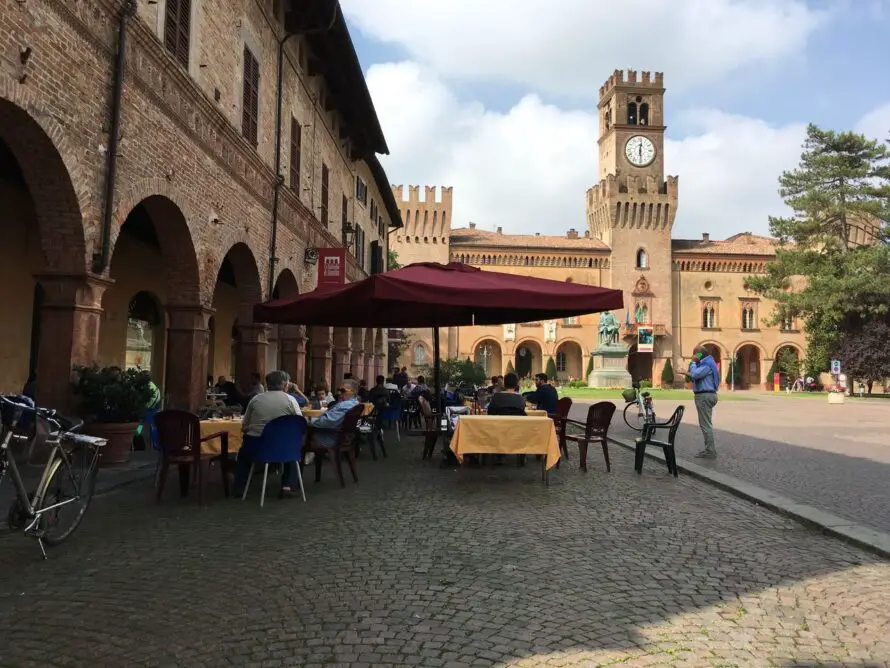
As you drive into Busseto, you can’t help be charmed by the main square – on one side the Pallavicini’s fort and the other a wide open piazza, which on a Sunday is where it all happens. Rumor has it that Verdi walked barefoot the 5.1K to Busseto for music instruction every day in order to save his shoes from wearing away.
Church had just let out and it seemed like everyone in town had attended, then plonked themselves in the adjacent café next door. The open air market was in full swing, as it is every Sunday, selling both cheesy clothing and cheese, the omnipresent Parmigiana, as well as different trinkets and treats for the resting folk.
The priest ran over to me, extremely eager to inform me that Verdi had definitely played this organ for at least six months in his early career! I began to get the feeling that, like every bed in the USA had been slept in by George Washington, every organ in Emilia Romagna had been played by the Maestro himself.
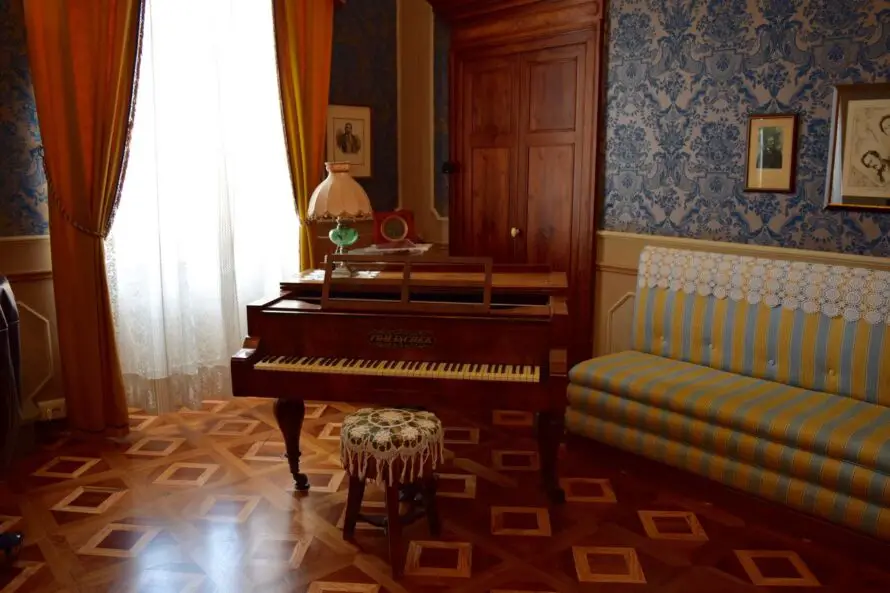
Casa Barezzi
If you know anything about Verdi, the name Antonio Barezzi is right up there with Giuseppe’s in musical history. It was all due to Signor Barezzi that there was even a Verdi. An astute businessman and music lover, playing five instruments himself, heard a young Verdi play & went on to champion him through his early life.
Today his house has become an archive of Verdi memorabilia, including Verdi’s first piano and loads of paintings, newspapers cuttings, and other tidbits that make a fan’s knees turn to jelly.
Verdi was so a part of the Barezzi family that he married Margherita, Antonia’s daughter. Sadly, she and their two children died from encephalitis four years after they were married. Verdi was devastated and almost quit writing forever. Thankfully for us, he was urged to try again, but this tragedy might be why there is nary a happy ending in any of his works.
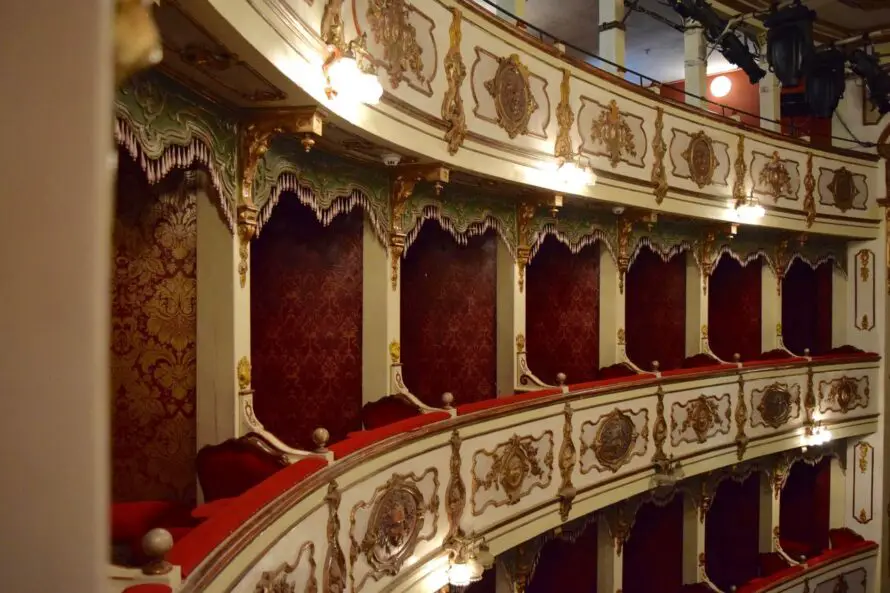
Teatro Giuseppe Verdi
The eponymously named theatre, housed in a wing of the Pallavicini Fort in the Busseto piazza, holds a traditional horse-shoe pattern with a lovely fresco on the ceiling representing comedy, tragedy, melodrama, and romantic drama. Rumor has it that Verdi never stepped inside as he thought it was a waste of money to build it. That hasn’t stopped the greats from performing there, like Toscanini and many others.
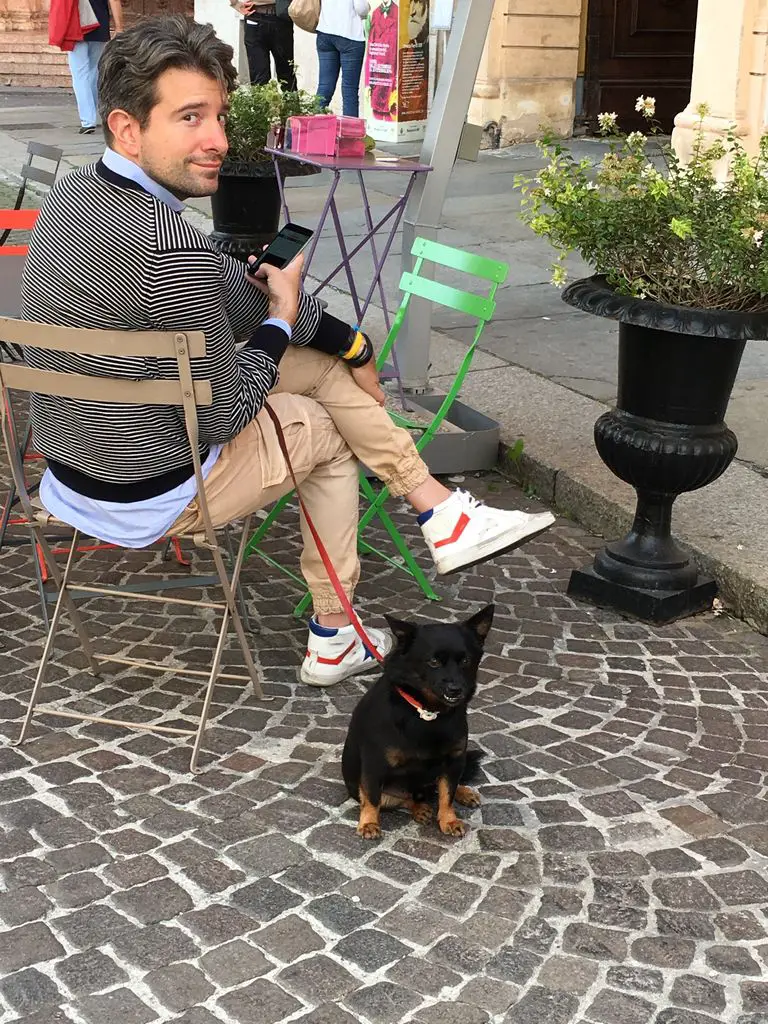
Parma
If you’re in Emilia Romagna specifically for the Verdi Festival, the real fun begins in Parma. (Though some of the locals can’t wait to see the back of us, or should I say bite the back of us!)
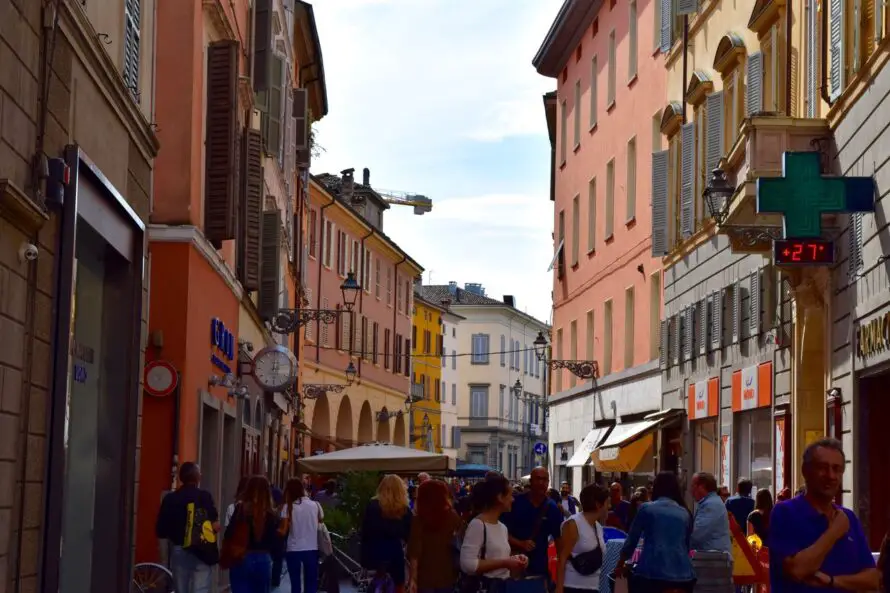
After months of anticipation, I was here; Parma, the town that somehow manages to combine the smells of its two greatest exports, parmigiana and prosciutto, with a slight hint of violets, the favorite of Maria Luisa, Napolean’s second wife and Parma habitué.
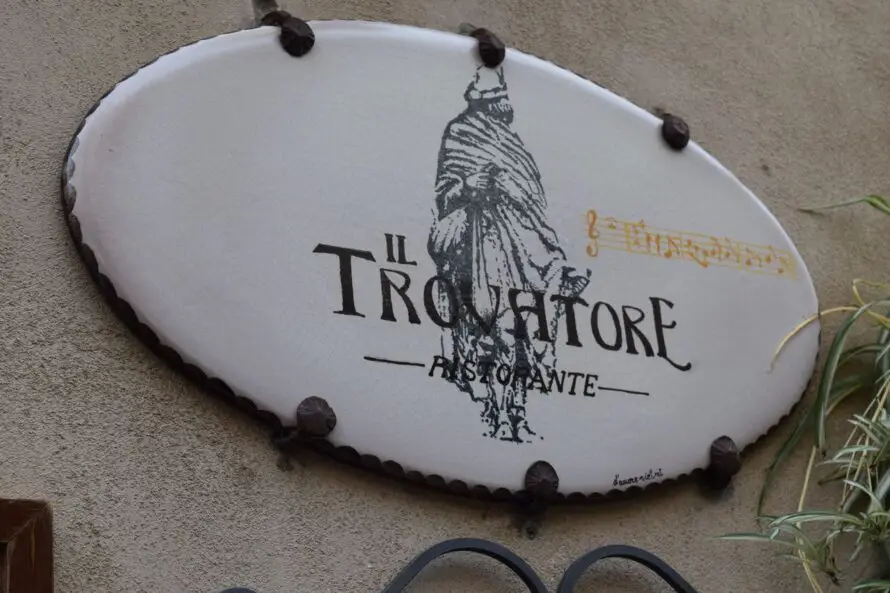
As we headed for our first taste of both, parm & prosciut, at a restaurant called Il Trovatore (Was every restaurant in Parma named after a Verdi opera?), the clock struck one. We turned the corner and Verdi himself had come out to greet us.
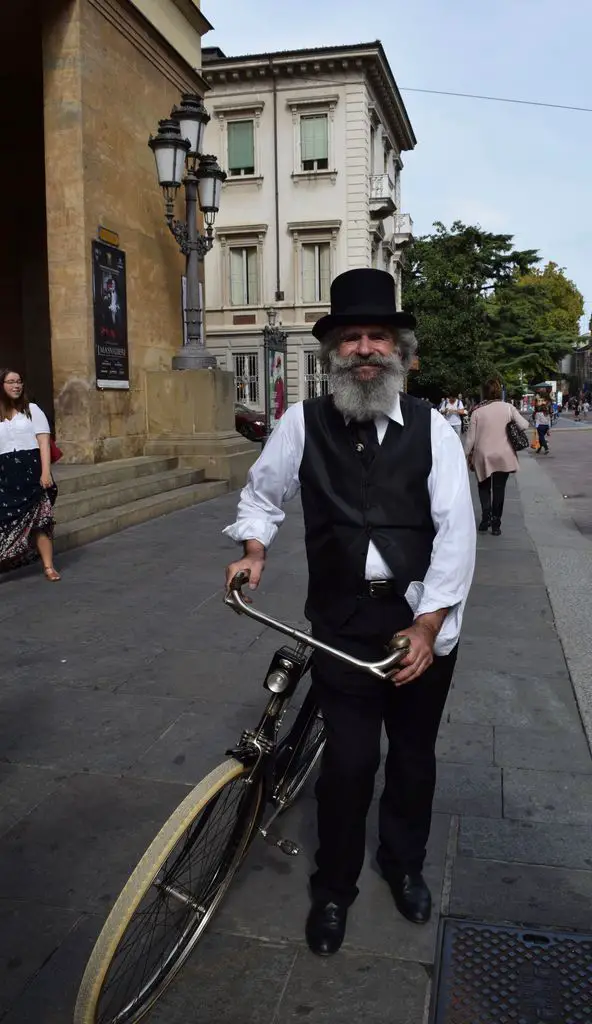
Dramatically, the windows of the Teatro Regio di Parma, home to the Festival, flew open and, well…I’ll let you enjoy a few seconds of what we heard:
In the words of Verdi himself: Libiamo ne’ lieti calici (Let’s Drink!) and Parma cried…let the Festival begin!
The Verdi Festival
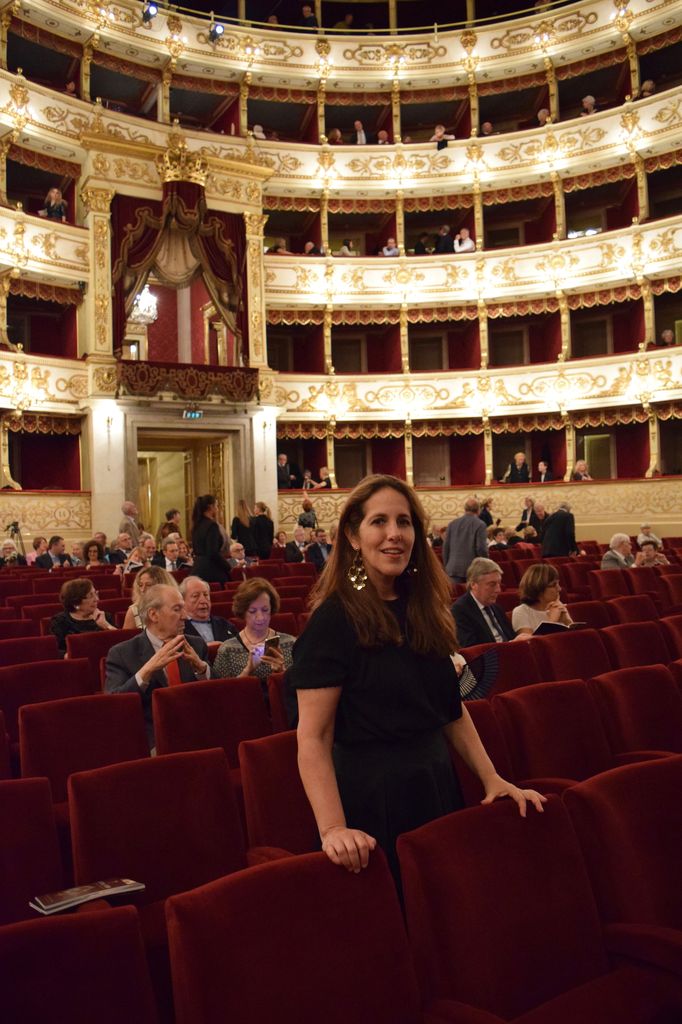
Teatro Regio di Parma
As I entered the holy temple of Verdi, the famed Teatro Regio, I wanted to sing as well. Built in 1829 in that same favored horse-shoe pattern, it became Verdi’s second home. Every one of his operas has been staged here since they were written. He even directed his own Nabucco in this very spot.
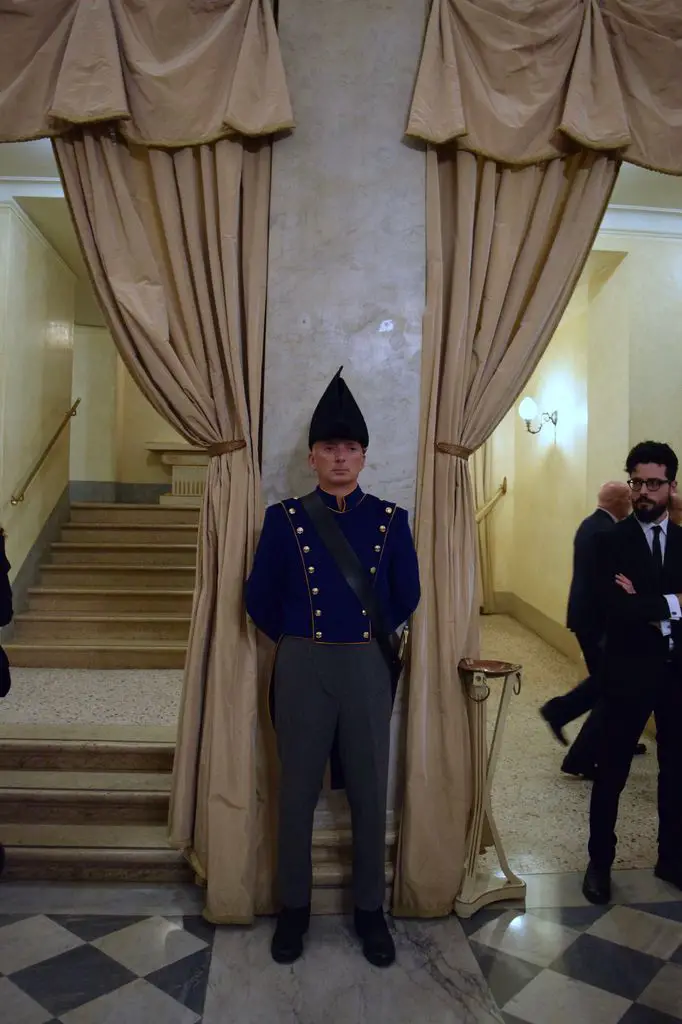
We adored the guards’ uniforms!
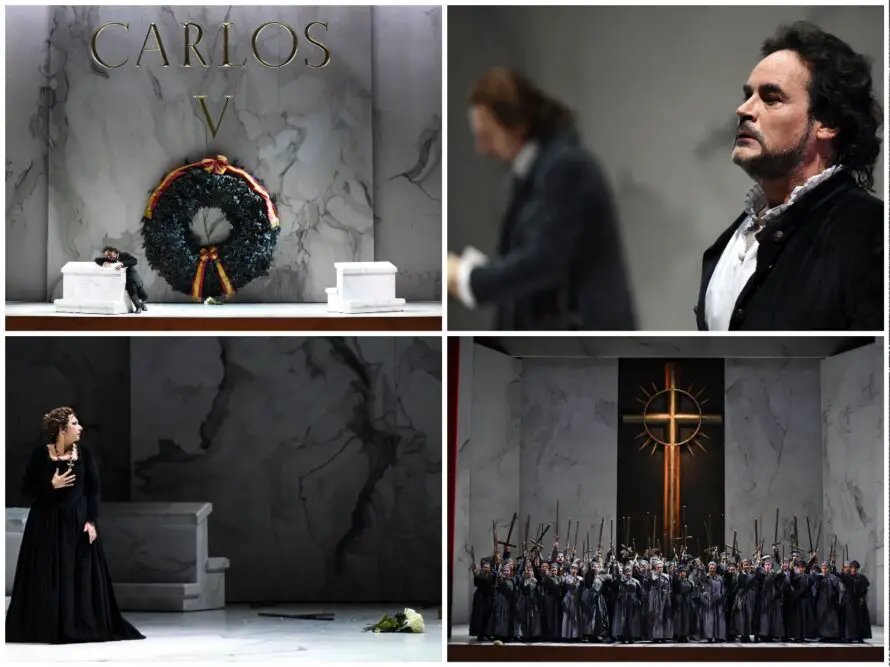
Credits @Roberto Ricci
Don Carlos
The Festival opened with a perennial favorite, Don Carlos. Verdi had written and rewritten this work many, many times. We were seeing it in the four act Italian version with Daniel Oren directing. A wonderful night overall with spectacle, themes of duty over passion, and ending in death and destruction – common to most of Verdi’s greatest hits!
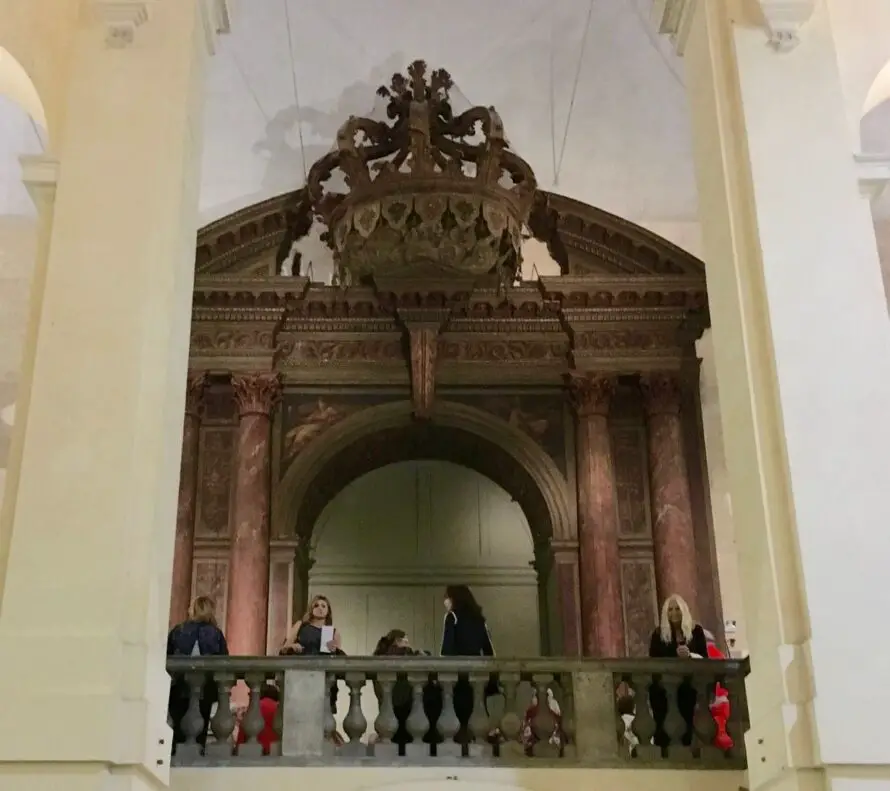
Giovanna D’Arco
I must admit it was Giovanna D’Arco that I was longing to see. Director Peter Greenaway had been pivotal in my understanding film as an art form forever, after seeing his masterpiece, The Cook, The Thief, His Wife & Her Lover.
This time it was opera that the team of artist Saskia Boddeke and husband Peter Greenaway were taking on at the magnificent Teatro Farnese. Just seeing anything in Teatro Farnese was exciting enough. This 300 year old, glorious, Baroque wooden theatre was the plaything of Duke Farnese and his friends. Lucky were those who were invited and I felt I had entered a secret world of the Italian nobility. Almost completely destroyed in WWII, it has been rebuilt, without the fantastic stucco that had once covered the walls, and is still stupendous.
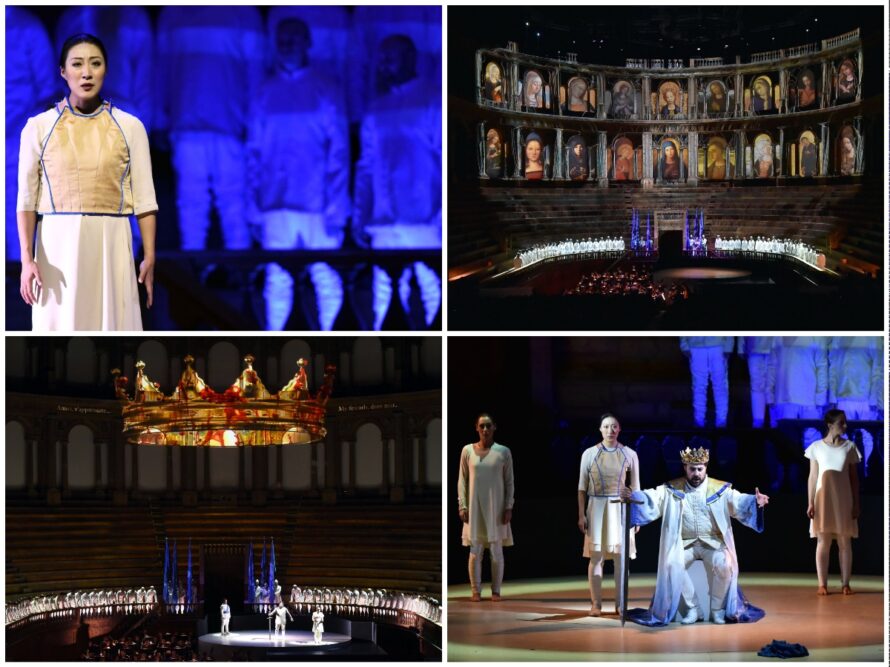
Credits @Roberto Ricci
Sometimes you feel that you are in the perfect place at the perfect time, witnessing something that won’t ever happen again. In my opinion, it’s the purest form of luxury: waiting with breathless anticipation for the last Harry Potter book to appear in stores, the final strike when the Boston Red Sox won the World series, watching Mo Farah fall, rise and still win the gold. These are moments in history where being there live can never be repeated. Giovanna D’Arco was one of them.
For all you who were not there, Saskia assured us that she is working to bring this production to other cities and spaces around the world. Keep a look out!
As we exited onto the streets after the show, it seemed everyone was humming something or other. I could bet money it was Verdi.
NB: I was the guest of Emilia Romagna Tourist Board and Parma Incoming. It was absolutely perfect and I can’t thank them enough for inviting me.
